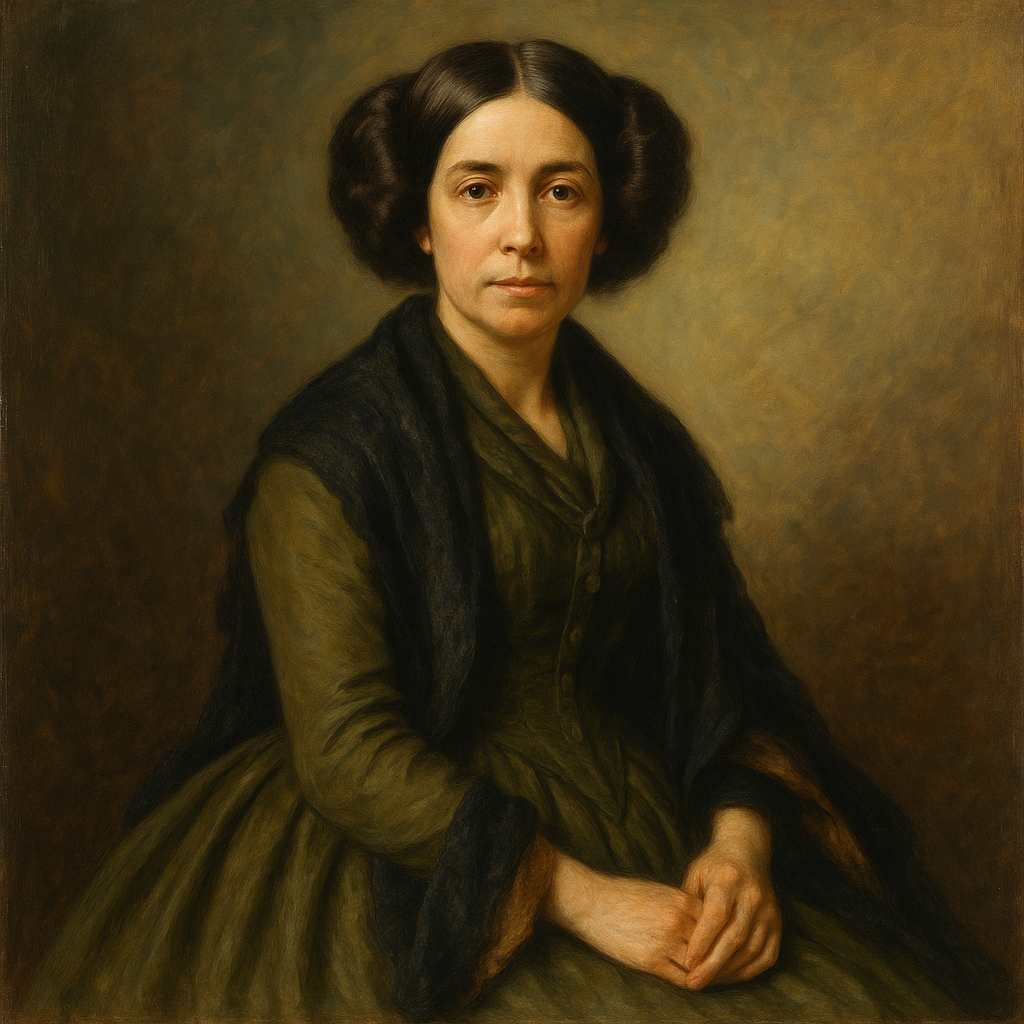Solitude
Ella Wheeler Wilcox
1850 to 1919

Laugh, and the world laughs with you;
Weep, and you weep alone;
For the sad old earth
Must borrow its mirth,
It has trouble enough of its own.
Sing, and the hills will answer;
Sigh, it is lost on the air;
The echoes bound
To a joyful sound,
But shrink from voicing care.
Rejoice, and men will seek you;
Grieve, and they turn and go;
They want full measure
Of all your pleasure,
But they do not want your woe.
Be glad, and your friends are many;
Be sad, and you lose them all;
There are none to decline
Your nectared wine,
But alone you must drink life's gall.
Feast, and your halls are crowded;
Fast, and the world goes by;
Succeed and give,
And it helps you live,
But it cannot help you die.
There is room in the halls of pleasure
For a long and lordly train;
But one by one
We must all file on
Through the narrow aisles of pain.
Ella Wheeler Wilcox's Solitude
Ella Wheeler Wilcox's Solitude (1883) is a poignant meditation on human behavior in the face of joy and sorrow. Using accessible language and a consistent rhythmic structure, Wilcox explores the dichotomy between communal celebration and individual suffering. The poem reflects universal truths about social interaction, the transient nature of relationships, and the isolating experience of grief. This analysis examines the poem's thematic elements, structure, and literary devices to elucidate its enduring appeal and moral insights.
Themes
At its core, Solitude addresses the human tendency to gravitate toward joy while shunning sorrow. The poem conveys a somber reality: society rewards happiness and success, while grief and failure are met with neglect or avoidance. This theme is evident in lines like:
"Laugh, and the world laughs with you;
Weep, and you weep alone."
Wilcox juxtaposes the communal nature of joy against the isolation of suffering, underscoring an inherent selfishness in human relationships. The poem also touches on existential truths—our shared journey through life's pleasures ("the halls of pleasure") and inevitable struggles ("the narrow aisles of pain"). These final lines broaden the scope from interpersonal dynamics to a more profound contemplation of mortality.
Structure and Form
The poem consists of six stanzas, each with five lines, adhering to an ABCCB rhyme scheme. This regular structure mirrors the rhythmic consistency of life's cycles of joy and sorrow, reinforcing the poem's thematic balance. Wilcox employs iambic tetrameter and trimeter alternately, which gives the poem a lyrical, sing-song quality. This musicality contrasts the somber subject matter, creating an engaging tension that draws the reader deeper into its reflection.
Literary Devices
Wilcox uses a range of literary devices to enhance her message:
-
Repetition: The repeated structure in the opening lines of each stanza ("Laugh...," "Weep...," "Sing...") reinforces the dichotomy between joy and sorrow. This parallelism also adds a rhythmic cadence that emphasizes the contrasts.
-
Personification: The "sad old earth" that "must borrow its mirth" imbues the world with human characteristics, suggesting a shared struggle that still fails to alleviate individual isolation.
-
Imagery: Vivid contrasts between joy and sorrow are painted with imagery of "nectared wine" versus "life's gall," and "crowded halls" versus "narrow aisles." These contrasting images evoke abundance and desolation, further highlighting the disparities in human experiences.
-
Symbolism: The "halls of pleasure" and "narrow aisles of pain" symbolize life's fleeting joys and inevitable challenges. These metaphors carry moral weight, reminding readers of their solitary journey through pain.
-
Irony: The poem's most poignant irony lies in the disparity between how society celebrates shared happiness yet recoils from shared grief. This irony is subtly interwoven into the examples Wilcox provides of communal joy and solitary suffering.
Tone and Mood
The tone of Solitude is didactic yet empathetic. Wilcox does not berate humanity for its failings but rather observes and reflects upon them with a quiet resignation. The mood alternates between celebratory in the descriptions of joy and somber in its exploration of loneliness and mortality.
Conclusion
Ella Wheeler Wilcox’s Solitude remains a powerful exploration of the human condition, addressing universal truths about the interplay between joy, grief, and societal behavior. Its accessible form and poignant observations ensure its resonance across generations. Through simple yet profound language, Wilcox reminds us of the fleeting nature of communal joy and the enduring reality of individual suffering, encouraging introspection about our roles in each other’s lives. The final lines, with their focus on life's inevitable pain, leave readers contemplating their own journey through the "narrow aisles of pain," reinforcing the poem's timeless relevance.
This text was generated by AI and is for reference only. Learn more
Want to join the discussion? Reopen or create a unique username to comment. No personal details required!



Comments
No comments yet. Be the first to comment!